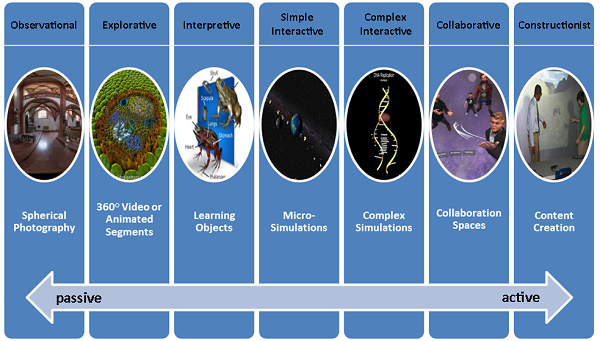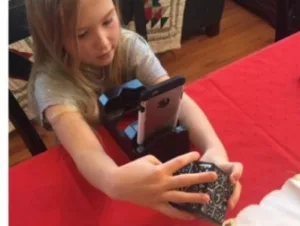In education, as in business, the shiny-object syndrome is alive and well. This type of procurement illness occurs when a customer habitually seems inclined to get excited about “the next new thing”. That’s why I always approach new technologies with a more jaundiced eye.

That being said, at ISTE 2017 this year I uncovered a technology worth a deeper dive. (The ISTE 2017 educational technology conference held in late June, with over 15,000 educators in attendance, is considered the largest ed-tech conference in the U.S. Every state and more than 72 countries were represented at this year’s ed-tech extravaganza.)
AT ISTE I spent considerable time at the Merge VR booth. The featured tagline for Merge VR is “Be transported to virtual worlds“. This San Antonio-based company dabbles, in a sophisticated way, in the spheres of VR/AR gaming and education. And in a logical fashion, just as their moniker suggests, they actually merge VR and AR in some very creative products. At ISTE 2017, Merge VR showcased their content and dual-application headgear (capable of viewing either VR or AR in one viewing device), but it was the physical device known as the Merge Cube that drew my attention the most.
The Merge Cube is a small, spongy 2.83 inch (72mm) cube that can be employed in either AR or VR mode, bringing a tactile and kinesthetic experience into play. The utter physicality of this intermediating device, and its potential in the education market, drove me to obtain a Merge Cube and undertake a proven protocol for testing new products: the GFGK protocol—that is, the grandfather-grandkid stress testing protocol.
My high-tech and highly intelligent granddaughter, Darcie—age nine—ran the Merge Cube through a rigorous testing protocol to determine whether this new shiny object would be the best use of her highly sought-after time. Like kids would ordinarily do; you know how busy their schedules and attention spans are these days. The below videos will give you a taste of the GFGK testing protocol in action:
As I suspected, the Merge Cube passed kid muster well, with the kinesthetic aspect making a huge difference in securing a child’s focus and time on task. As far as commercial success, Andrew Trickett, the co-founder of Merge VR, advises
“since the ISTE rollout, MergeVR has released the Merge Cube commercially, selling over 1 million units, including some school districts.”
Now available at stores like Walmart, Best Buy, Target and others, the Merge Cube ($9 at Walmart) is sold without the accompanying VR goggles that enable either/or VR/AR viewing. Once purchased, free and premium apps are available in both gaming and education genres. According to Trickett, “Some of the apps released by Merge and other developers definitely have educational value — anatomy viewer, solar system viewer, and a professional-grade app for working with children that have behavioral issues.”
All being said, the Merge Cube has definite potential in the education market. As with most new AR/VR/MR products approaching the educational market, the amount of content development really matters. More is still not enough. But I have two crucial suggestions for Merge VR, other content developers, and even hardware/display manufacturers hoping to cash in on the education market, just in case anyone is listening:
Transcend the obvious. Most folks trying to enter the educational market are pushing the lowest common denominators of content/use cases for VR/AR, as evidenced in my taxonomy of content (see chart below). Try moving your foothold to encompass the more active genres shown. These last four columns in the taxonomy matter the most.

Think curriculum. Andrew Trickett, the co-founder of Merge VR, mentioned some substantial sales growth figures, “including some school districts.” That schools would be interested in the Merge Cube, there is no doubt. But I would approach some of these districts and educators and aim to acquire a full library of workable lesson plans and extensions—a surrounding curriculum, if you will—and thus fertilize this newly planted garden of creativity. VR/AR/MR plus curriculum is stronger than VR/AR/MR all by its lonesome.—Len Scrogan

